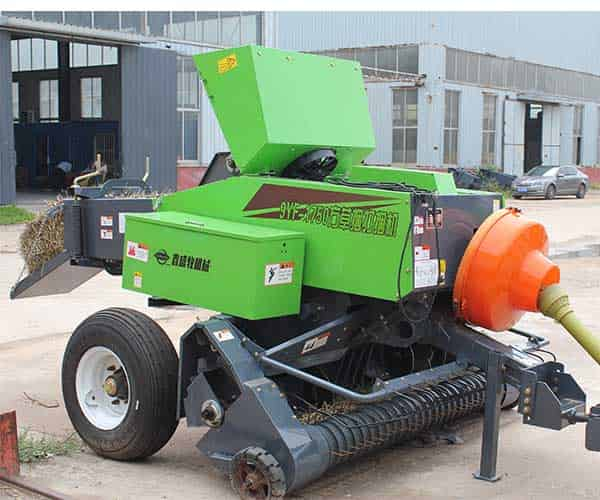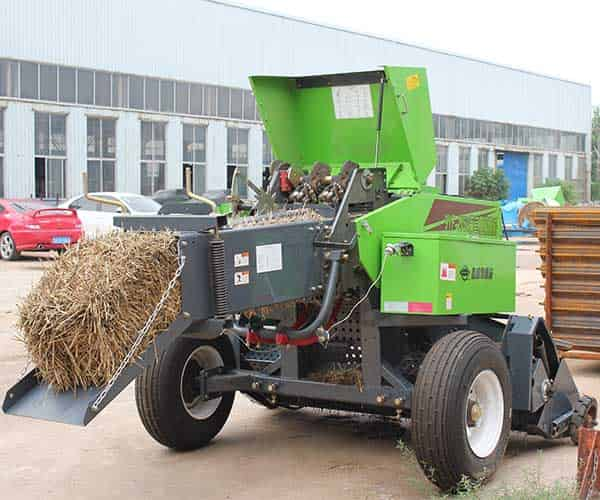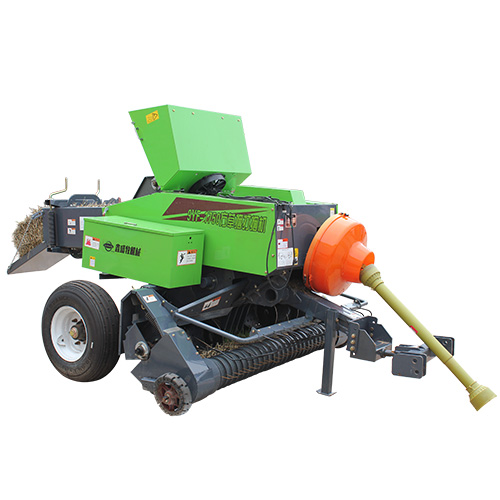Introduction
In the realm of modern agriculture, the square hay baler stands out as a crucial piece of equipment for efficiently baling hay. This blog explores the myriad advantages that come with investing in a square hay baler for your farm. From increased productivity to improved hay quality, we delve into how this equipment can revolutionize hay baling operations.
Understanding Square Hay Balers

Before we dive into the advantages, let’s first understand what square hay balers are and how they function. This section provides an overview of square hay balers, including their design, operation, and the types of hay they can bale. Understanding the basics is key to unlocking the full potential of this essential farming equipment.
Design: Square hay balers are meticulously engineered to transform loose hay into compact, uniform bales for storage, transportation, and livestock feed. They typically consist of components such as a pickup mechanism, feeding chamber, compression system, and bale ejection mechanism. The robust construction of square hay balers ensures durability and reliability even under demanding farming conditions.
Operation: Square hay balers operate by first gathering loose hay from the field using a pickup mechanism, which feeds the material into the baling chamber. Within the chamber, the hay is compressed and shaped into rectangular bales using a series of rollers and plunger mechanisms. Once the desired bale size is achieved, the bale is tied with twine or wire and ejected from the baler for collection and storage.
Types of Hay: Square hay balers are versatile machines capable of baling various types of hay, including grass hay, alfalfa, clover, and straw. They can accommodate different moisture levels and textures, making them suitable for a wide range of hay-producing regions and climates. Whether it’s dry hay for winter feed or higher-moisture hay for silage production, square hay balers offer flexibility and efficiency in baling operations.
Advantages of Square Hay Balers
Increased Efficiency: Square hay balers are renowned for their ability to significantly increase the efficiency of hay baling operations. This section explores how these machines can bale hay at a faster rate compared to traditional methods, thereby saving valuable time and labor on the farm.
Improved Hay Quality: One of the standout advantages of square hay balers is their capability to produce uniformly-shaped bales of hay. This segment discusses how square bales offer better handling, storage, and transportation options, ultimately leading to higher-quality hay products.
Versatility: Square hay balers are versatile machines that can handle a variety of hay types and conditions. From dry hay to wet hay, this section examines how square hay balers excel in producing consistent bales regardless of the weather or crop conditions.
Comparative Analysis: Square Hay Baler vs. Round Hay Baler
This section provides a comparative analysis between square hay balers and round hay balers. Through a side-by-side comparison, we highlight the advantages of square hay balers in terms of efficiency, bale quality, and versatility.
| Aspect | Square Hay Balers | Round Hay Balers |
|---|---|---|
| Efficiency | Square hay balers are known for their high efficiency in baling hay. They typically have a faster baling speed and can produce more bales per hour compared to round hay balers. | Round hay balers may have a slower baling speed and produce fewer bales per hour due to their round bale formation process. |
| Bale Quality | Square hay balers produce uniform, rectangular bales that are easy to stack, transport, and handle. These bales have consistent density and shape, resulting in better hay preservation and storage. | Round hay balers produce cylindrical bales that may vary in size and density. While round bales are easy to roll and store in some situations, they may be prone to spoilage and uneven drying. |
| Versatility | Square hay balers offer versatility in baling different types of hay and forage crops. They can handle a wide range of hay varieties and moisture levels, making them suitable for diverse farming operations. | Round hay balers are primarily designed for baling grass hay and are less versatile compared to square hay balers. They may not perform as well with certain types of hay or in wet conditions. |
Case Studies: Real-World Success Stories

Drawing inspiration from real-world examples, this section showcases success stories of farms that have invested in square hay balers. Case studies and testimonials offer insights into how these farms have benefited from increased productivity, improved hay quality, and reduced labor costs.
Case Study 1: Green Pastures Farm
Green Pastures Farm, a family-owned operation in the heart of the Midwest, faced challenges with their hay baling process due to inefficiencies with their existing equipment. Seeking a solution, they decided to invest in a modern square hay baler. The results were remarkable. With the new baler, Green Pastures Farm experienced a significant boost in productivity, allowing them to bale more hay in less time. Additionally, the uniform rectangular bales produced by the square hay baler facilitated easier handling and stacking, optimizing storage space in their barns. As a result, Green Pastures Farm saw a notable increase in hay quality and a reduction in hay spoilage, ultimately leading to improved profitability.
Case Study 2: Rolling Hills Ranch
Rolling Hills Ranch, located in the Pacific Northwest, faced labor challenges during the peak hay baling season. With a limited workforce, they struggled to keep up with the demands of their hay production operation. Seeking a solution, Rolling Hills Ranch invested in a state-of-the-art square hay baler equipped with advanced automation features. The investment paid off handsomely. The automated capabilities of the square hay baler significantly reduced the need for manual labor, allowing Rolling Hills Ranch to streamline their hay baling process and operate more efficiently with fewer personnel. As a result, the ranch experienced a substantial reduction in labor costs while simultaneously increasing their overall hay production output.
These real-world examples demonstrate the transformative impact that investing in square hay balers can have on farm operations. From increased productivity and improved hay quality to reduced labor costs and enhanced efficiency, square hay balers are proving to be invaluable assets for farmers across the globe.
Conclusion
In conclusion, investing in a square hay baler for your farm can yield numerous benefits, including increased efficiency, improved hay quality, and enhanced versatility. By leveraging this essential piece of equipment, farmers can streamline their hay baling operations and achieve greater success in their agricultural endeavors.
FAQ
What size of square hay bales can be produced with a square hay baler?
Square hay balers typically produce bales that measure approximately 14 inches by 18 inches by 36 inches. However, the exact size may vary depending on the specific model and settings of the baler.
Can square hay balers handle wet hay?
Yes, square hay balers are designed to handle a wide range of hay types and conditions, including wet hay. However, it’s important to adjust the baler settings accordingly and ensure proper drying and curing of the hay before baling to prevent mold or spoilage.
How much maintenance is required for a square hay baler?
Like any piece of farm equipment, square hay balers require regular maintenance to ensure optimal performance and longevity. This includes cleaning, lubricating moving parts, inspecting belts and chains, and addressing any wear or damage promptly. Regular maintenance schedules and guidelines are provided in the manufacturer’s manual.
Can square hay balers be used for other types of crops besides hay?
While square hay balers are primarily designed for baling hay, they can also be used for other types of crops such as straw, grasses, and even certain types of grains. However, it’s important to consider the suitability of the crop and adjust the baler settings accordingly to ensure proper baling and handling.


